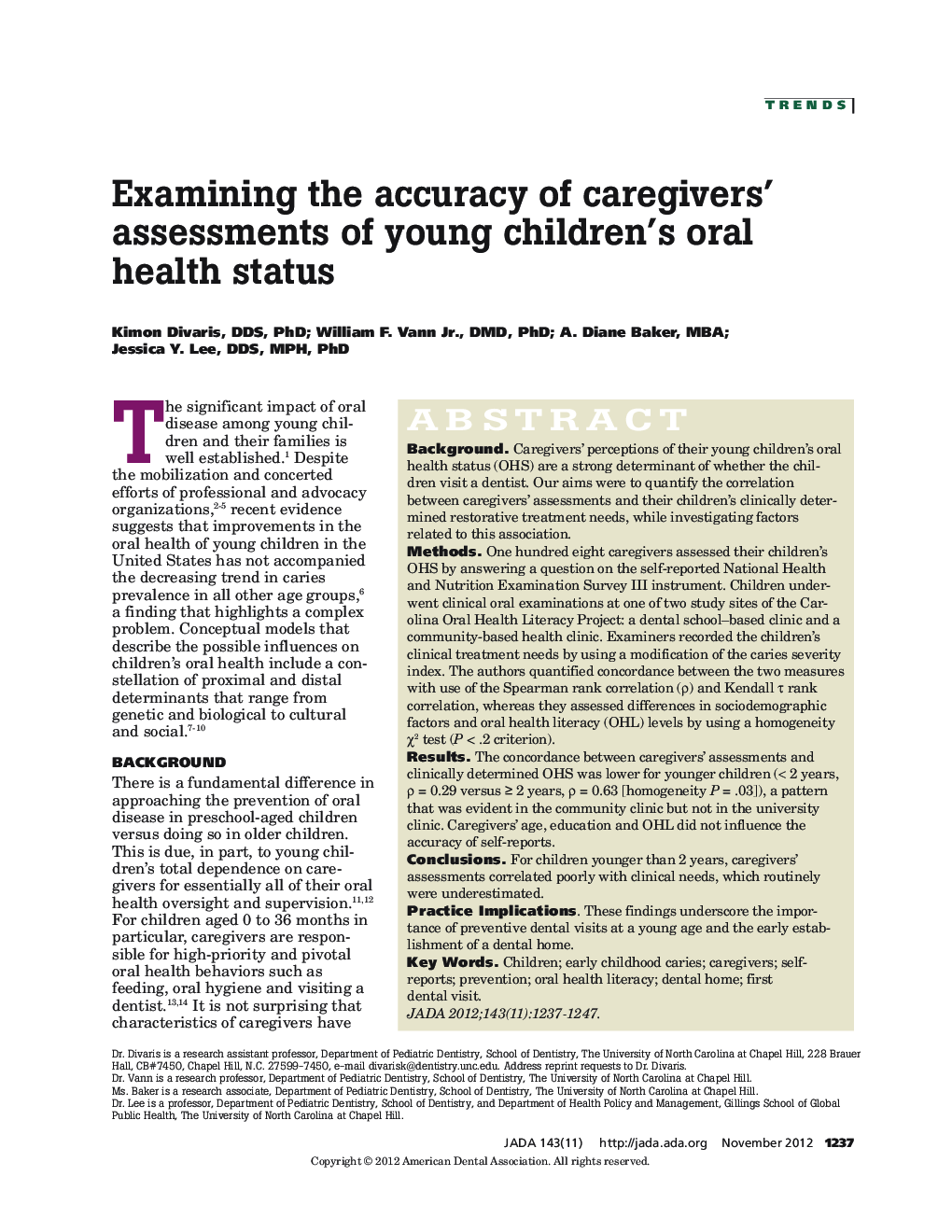| Article ID | Journal | Published Year | Pages | File Type |
|---|---|---|---|---|
| 3137849 | The Journal of the American Dental Association | 2012 | 11 Pages |
ABSTRACTBackgroundCaregivers' perceptions of their young children's oral health status (OHS) are a strong determinant of whether the children visit a dentist. Our aims were to quantify the correlation between caregivers' assessments and their children's clinically determined restorative treatment needs, while investigating factors related to this association.MethodsOne hundred eight caregivers assessed their children's OHS by answering a question on the self-reported National Health and Nutrition Examination Survey III instrument. Children underwent clinical oral examinations at one of two study sites of the Carolina Oral Health Literacy Project: a dental school–based clinic and a community-based health clinic. Examiners recorded the children's clinical treatment needs by using a modification of the caries severity index. The authors quantified concordance between the two measures with use of the Spearman rank correlation (ρ) and Kendall τ rank correlation, whereas they assessed differences in sociodemographic factors and oral health literacy (OHL) levels by using a homogeneity χ2 test (P < .2 criterion).ResultsThe concordance between caregivers' assessments and clinically determined OHS was lower for younger children (< 2 years, ρ = 0.29 versus = 2 years, ρ = 0.63 [homogeneity P = .03]), a pattern that was evident in the community clinic but not in the university clinic. Caregivers' age, education and OHL did not influence the accuracy of self-reports.ConclusionsFor children younger than 2 years, caregivers' assessments correlated poorly with clinical needs, which routinely were underestimated.Practice ImplicationsThese findings underscore the importance of preventive dental visits at a young age and the early establishment of a dental home.
